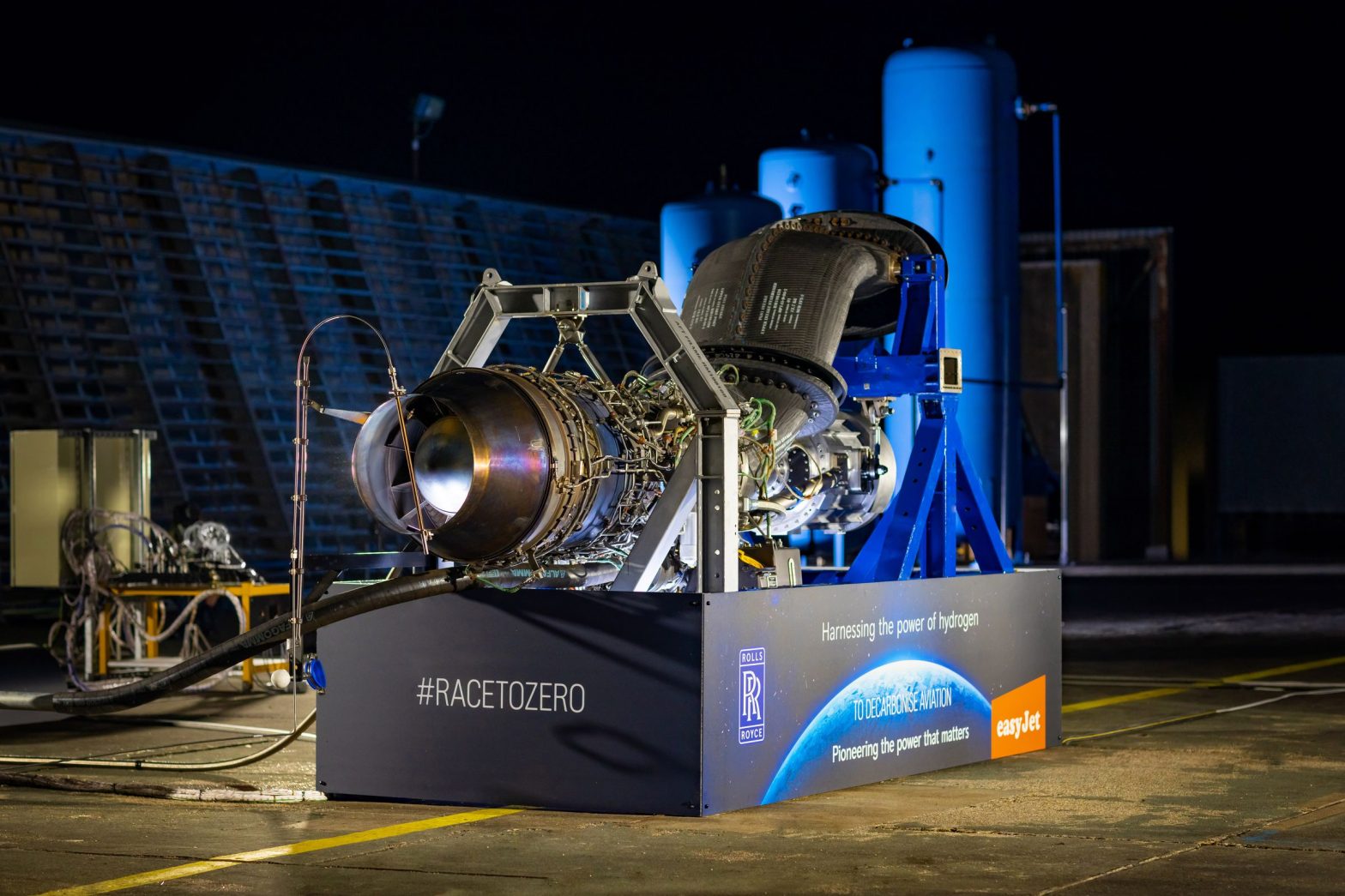/
Rolls-Royce and easyJet partnered up to test whether hydrogen-powered planes can one day clean up aviation’s pollution.
:format(webp)/cdn.vox-cdn.com/uploads/chorus_asset/file/24238304/52522748066_2bddb44566_o.jpg)
Rolls-Royce and European airline easyJet announced that they’ve successfully tested a hydrogen jet engine — technology the companies hope might eventually help erase aviation’s greenhouse gas emissions. The ground test marks “the world’s first run of a modern aero engine on hydrogen,” Rolls-Royce said in a press release yesterday.
Aviation is considered one of the most difficult industries to clean up because it’s much harder to make electric planes than electric vehicles. Batteries charged with renewable solar and wind energy are still too bulky for long flights. So airlines and plane manufacturers are working to develop planes that can run oncleaner fuels like hydrogen, which produces water vapor instead of carbon dioxide when burned.
The two companies used a converted Rolls-Royce AE 2100-A regional aircraft engine for the ground test conducted in the UK. The European Marine Energy Centre produced the fuel for the test at a hydrogen production and tidal test facility on Eday in the UK’s Orkney Islands. Since the hydrogen was made with wind and tidal power, it’s called green hydrogen.
Both Rolls-Royce and easyJet have made company commitments to reduce their greenhouse gas emissions and are looking to green hydrogen to help them reach climate goals. But for now, green hydrogen is still in short supply and prohibitively expensive to make. Some governments including the Biden administration have begun to invest heavily in producing more of it.
Whilegreen hydrogen is produced with renewable energy, most hydrogen today is still made using gas. That’s the tricky part when it comes to casting hydrogen as a clean fuel — it’s really only as clean as the energy source used to make it. If gas is used for hydrogen production, the process releases planet-heating carbon dioxide emissions.
Another major hurdlefor hydrogen-fueled flight, according to the International Air Transport Association, will be to introduce and certify new aircraft designs. To run on hydrogen, aircraft need to be redesigned to incorporate larger fuel tanks. For instance, a Boeing 747 jumbo jet would need more than 1 million liters of hydrogen to get roughly the same range as 250,000 liters of jet fuel, The Guardian reports.
With those limitations in mind, it looks like green hydrogen will initially be most useful for short flights. A 2020 European Union report estimated that hydrogen-powered passenger planes for routes up to 3,000 kilometers (1,864 miles) could hit the market by 2035. Fortunately for easyJet, it’s primarily a short-haul airline. Rolls-Royce, a leading engine supplier for business aviation, counts more than 400 airlines among its customers. At least two more of those customers — Boeing and Airbus — are also researching hydrogen as a clean aviation fuel.
And while the recent ground test might have been an early success, there’s still a lot of work to be done before a hydrogen-fueled flight takes off. Rolls-Royce and easyJetare planning more ground tests before moving on to “a longer-term ambition” of carrying out flight tests, according to the Rolls-Royce press release.
